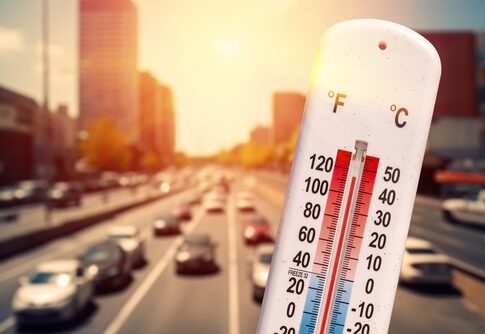As a blistering heat wave engulfs the Southeast United States, the Department of Energy has taken decisive action to prevent widespread blackouts. Secretary Chris Wright has issued an emergency order allowing Duke Energy to exceed emission thresholds to ensure power grid stability across six states. What can residents do to make sure they’re conserving energy?
Federal Emergency Response to Prevent Blackouts
The Department of Energy has invoked Section 202(c) of the Federal Power Act to prevent potential blackouts across the Southeast amid an intense heat wave. Secretary Chris Wright issued the emergency order authorizing Duke Energy to exceed certain emission thresholds while operating select units at maximum output.
This decisive action comes as the National Weather Service warns of “extremely dangerous heat” sweeping across the Midwest and East Coast. The emergency authorization specifically targets Duke Energy’s operations across Kentucky, Ohio, Indiana, Florida, North Carolina, and South Carolina, where millions of customers depend on reliable electricity during these extreme conditions.
Heatwave in Missouri split the street wide open and sent this car flying
pic.twitter.com/UDUNmF4J8g— FearBuck (@FearedBuck) June 23, 2025
Prioritizing Power Reliability Over Emissions
The emergency order represents a clear prioritization of maintaining power reliability over environmental regulations during crises. Secretary Wright emphasized the administration’s commitment, stating, “Under President Trump’s leadership, the Department of Energy will use all tools available to maintain a reliable, affordable, and secure energy system for the American people.”
The order allows Duke Energy Carolinas to temporarily operate without adhering to standard emission limits, providing the flexibility needed to meet surging demand. This regulatory relief demonstrates the practical challenges of balancing strict environmental standards with the immediate need for energy security during extreme weather events that strain the power grid.
Heatwave to roast NYC with record-setting temps up to 102 degrees: ‘Like walking through a swimming pool’ https://t.co/Rb9Tz3WdeK pic.twitter.com/ySz4x82nl1
— New York Post (@nypost) June 20, 2025
Exposing Grid Vulnerabilities and Future Challenges
This emergency intervention highlights significant vulnerabilities in regional power planning and infrastructure. The need for federal action reveals how extreme weather events can quickly push standard power generation capacity to its limits, requiring extraordinary measures to prevent system failure.
The order, issued by the Office of Cybersecurity, Energy Security, and Emergency Response (CESER), aligns with President Trump’s Executive Order on National Energy Emergency. Energy experts note this situation underscores the increasing reliance on short-term federal intervention for grid stability, raising important questions about long-term energy security planning and the adequacy of current infrastructure to handle climate extremes.


